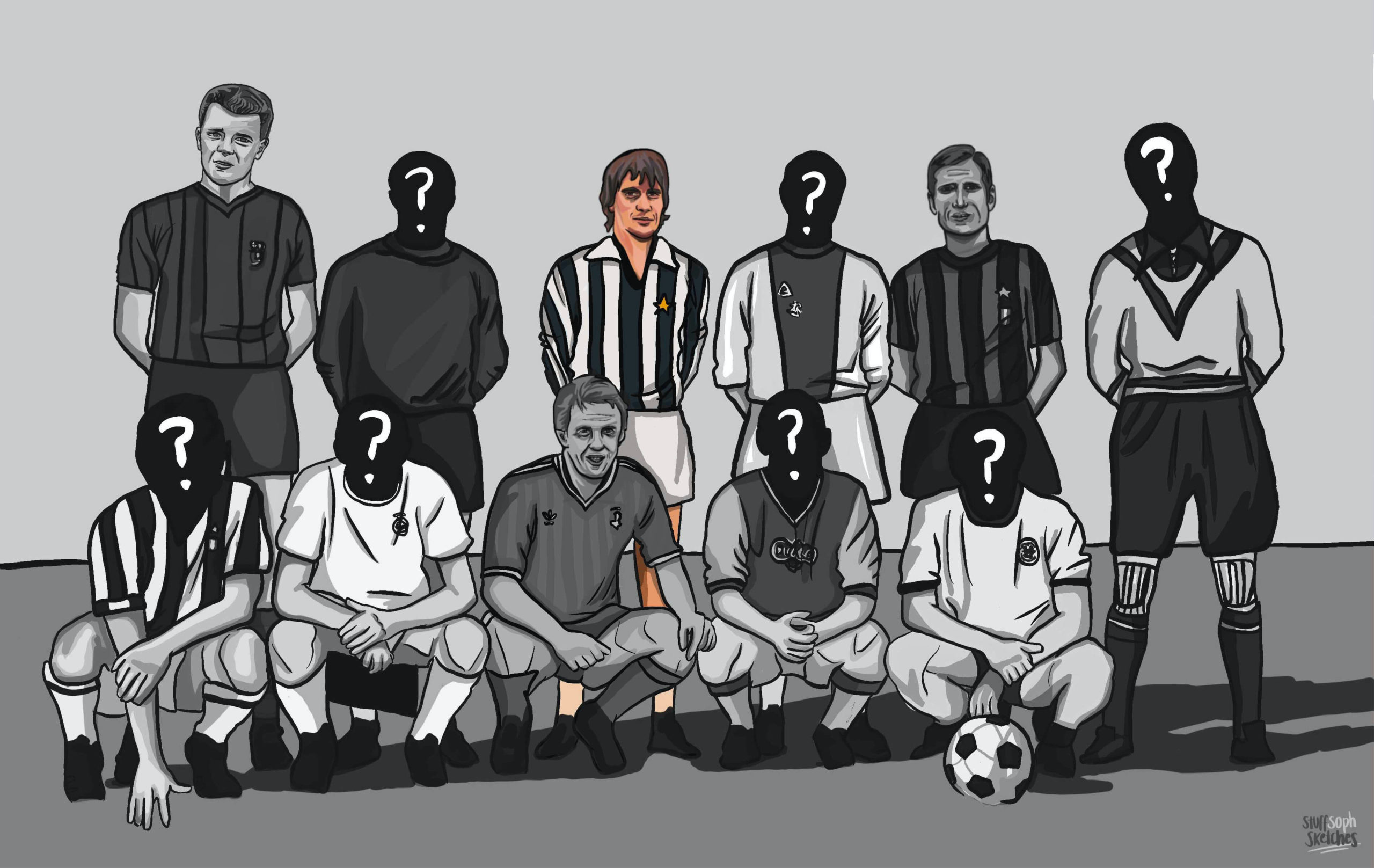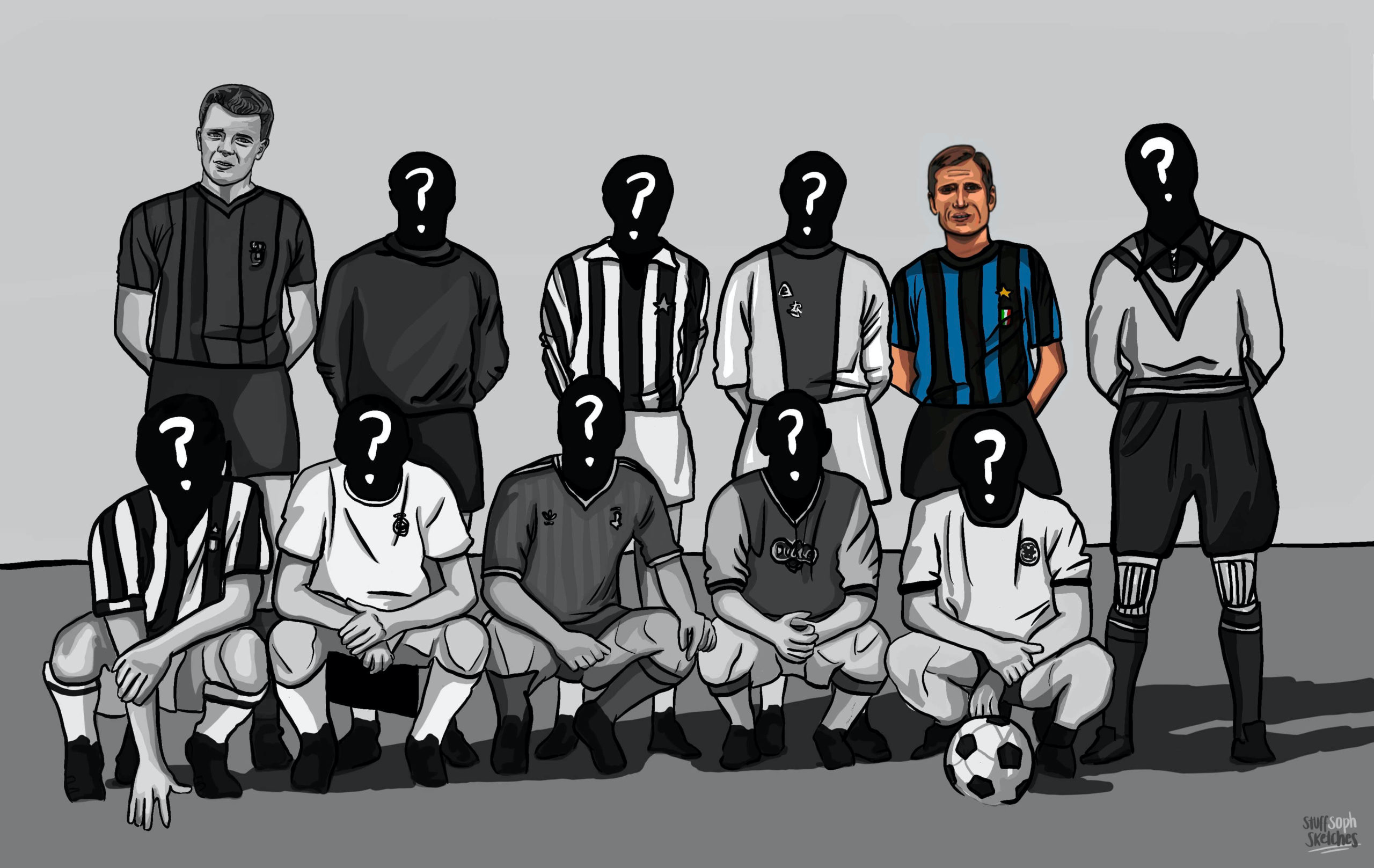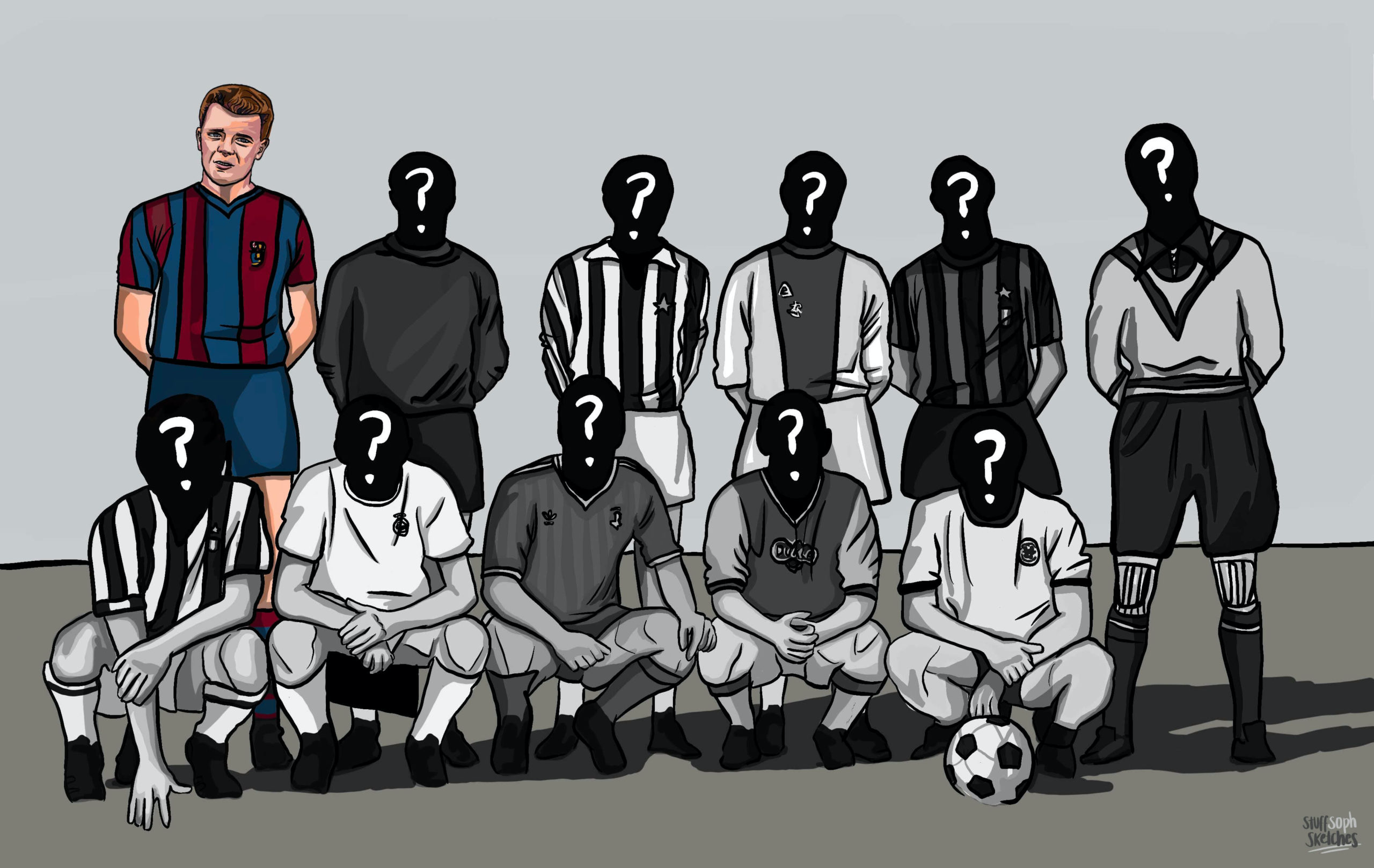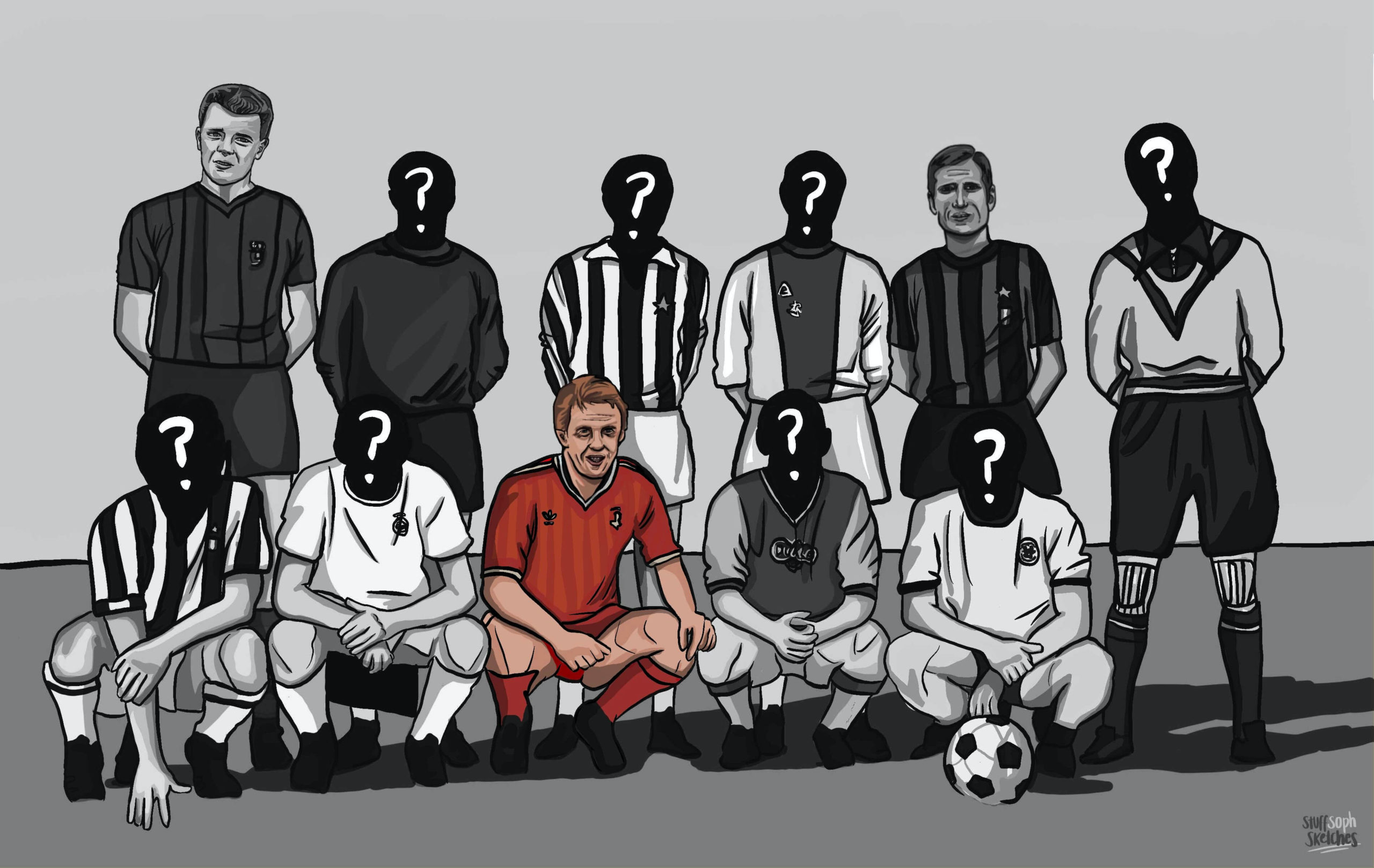Every successful team needs one or two players who are not afraid to do the ugly things in a football game, someone who isn’t scared to make tackles or blocks for their team, often putting their body on the line in the process. In England, these types of players are usually big bustling centre halves or a defensive midfield destroyer, players such as Didier Deschamps (once labelled “The Water Carrier” by Eric Cantona) or players that Arsène Wenger appeared to have a perpetual blind spot for in his last years at Arsenal. Sometimes a team is lucky, and they find a player who can combine the uglier side of the game with unquestionable footballing ability. For ten glorious years, Juventus had such a player in Marco Tardelli. Whilst his teammates Platini, Boniek and Brady took the plaudits for their attacking prowess, Tardelli and his midfield partners were the engine for a Juventus team that enjoyed almost unparalleled success.
Tardelli began his playing career with AC Pisa 1909 in Serie C. After two years playing in Tuscany, Tardelli transferred to the Serie B side Como, but only lasted one season in Lombardy before Juventus signed the twenty-year old for approximately one billion lira in October 1975. Upon his arrival at Juventus, Tardelli admitted to feeling nervous when entering a changing room full of established players such as Dino Zoff, Roberto Bettega and Franco Causio. Although, it wasn’t just being in exalted company that proved a culture shock for the long haired, jewellery-wearing young man from Careggine. At Juve, Tardelli was told he would have to get a haircut, lose the jewellery, and would have partake in academic studies. Tardelli studied to become a surveyor, later explaining that, whilst they were disciplined, Juventus cared for their players as men as well as footballers. The argument for making players study was that it would be easier to coach and manage a footballer who was cultured and intelligent. Regardless of the reason, Tardelli completed his studies in his spare time, rightfully earning his degree.
Despite having a side containing the likes of Zoff, Bettega and Gentile, Juventus were unable to retain their Serie A title in the 1975-76 season, Tardelli’s first with the club. However, this would prove to be only one of two seasons that Juventus didn’t win anything, during Tardelli’s ten-year span with the club. The following season (1976-77), Tardelli won not only his first Serie A but also helped La Vecchia Signora to their first European title, scoring the winning goal in the first leg of the UEFA Cup final against Athletic Bilbao. Again, in the 1977-78 season, Tardelli helped Juventus to retain their league title.
I recommend that you search “Tardelli Celebration” on YouTube and remember how it felt to score a goal when you were ten years old.
In an international match against France later that year, Tardelli aggressively marked Platini, his future teammate, out of the game (although some suggested too aggressively). His reputation as a “hardman” was then cemented in a World Cup qualifier against England in November 1978 after elbowing Keegan at Wembley. Tardelli admitted he enjoyed a physical battle with players like Keegan, Zico and Maradona who were willing to fight back. In 2007, he was voted number ten in Times’ Fifty Hardest Players with Jimmy Greaves suggesting that Tardelli was responsible for “more scar tissue than the surgeons at Harefield Hospital”. Similarly, when voted fourteenth in the Best Twenty Midfielders of All Time by Goal 50, the website made note of Tardelli’s willingness to do absolutely anything in order to regain possession.
In addition to his physicality, Tardelli was aptly nicknamed Schizzo (loosely translated as “darter” or “dasher”) by his teammates. He was quick, tenacious, and energetic. In the Guardian at the time, Johnathan Wilson described Tardelli as a ‘destroyer’ whose role it was to win back possession and distribute it to other players. But Tardelli was more than that. He was versatile, able to play anywhere in defence or midfield, and tactically intelligent. Aside from battling for the ball, Tardelli could score all types of goals with either foot, from inside or outside the box, as well as headers. He was capable of third man runs or simply beating defenders himself, before getting his shot away. When watching footage of Tardelli it is easy to understand why he is considered one of the best midfielders of the 1980s and was voted thirty-seventh in the UEFA Jubilee Poll in 2004.
In May 1979, eight days after Juventus had won the Coppa Italia, the international friendly between Argentina and Italy turned into a gladiatorial duel between Tardelli and Maradona. As a result of this performance and those in the following month, Tardelli was selected for the FIFA World XI match against Argentina in June. Although the 1979-80 season was disappointing on a club level, as Juventus failed to win a single trophy, Tardelli achieved great personal success as he was selected in the European Championship Team of the Tournament after Italy finished fourth in 1980.
After this trophy-less stint, Juventus went on to win the Scudetto in the next two seasons, yet it was the 1982 World Cup that would be Tardelli’s defining moment as a footballer. Even with bouts of insomnia that often left him sleepless, Tardelli had a fantastic tournament. He scored the winner against Argentina in the second group stage match and it was he who drove the ball into the box that led to Paulo Rossi’s winner against Brazil only six days later. After progressing to the final and with his customary lack of a good night’s sleep, Tardelli lined up against West Germany in a match that would see one of the most famous goal celebrations of all time. Italy would go on to defeat West Germany 3-1 with Tardelli motoring the Italians. His quick thinking led to the cross from which Paolo Rossi scored the first goal, but it was Italy’s second that lives on in our collective memory: receiving a pass from Scirea, Tardelli appears to mis-control the ball before hitting a left footed half-volley into the West German goal. What happened next is one of the most iconic images in footballing history. Having scored, Tardelli wheeled away, screaming and sprinting with his arms outstretched, none of his teammates able to catch him. If you’ve never seen the goal celebration, I recommend that you search Tardelli Celebration on YouTube and remember how it felt to score a goal when you were ten years old.
Having won the World Cup in 1982, Tardelli returned to Juventus and over the course of the next three years won the Coppa Italia, another league title, the European Cup Winners Cup, the UEFA Super Cup, and the European Champions Cup. In doing so, Tardelli is one of only nine players to have won all three major European cup competitions and, alongside his teammates Antonio Cabrini and Gaetano Scirea, he was one of the first three players to achieve this feat.
Unsurprisingly, Tardelli’s European Cup victory in 1985 was overshadowed by the Heysel stadium disaster. Despite the fact that the tragedy occurred just before kick-off, UEFA refused to let Juventus or Liverpool forfeit the fixture for fear of further disturbances. The match ended with a subdued 1-0 victory for Juventus (Platini scoring the only goal from the penalty spot). As with everyone who was at the game, Tardelli still carries the scars of Heysel with him today: ‘You don’t just remember it every ten years or twenty years. It is with you and, sometimes, you think about it. It is part of you. The final in Brussels was a defeat for everybody on all levels. I don’t count it as a winners’ medal in any way’.
It is worth remembering that Tardelli was a part of a Juventus team that when it wasn’t winning silverware, was coming very close to success. In addition to the ten trophies Tardelli won at Juve, “The Old Lady” were European Cup semi-finalists in 1978, finalists in 1983, European Cup Winners Cup semi-finalists in 1980, Coppa Italia semi-finalists in 1983 as well as Serie A runners up in 1976, 1980 and 1983.
After ten years at Juventus, having made 298 appearances and scoring fifty-one goals, Tardelli moved to Internazionale in the summer of 1985. Not long after, he ended his career in the Swiss top-flight with St. Gallen after competing in the 1987-88 season.
Tardelli certainly wasn’t afraid to do whatever he needed to do to win possession and even he acknowledges his well-deserved reputation for dirtiness. Football is littered with players who had, or have, very little else about their game other than fouling and tough tackling, but watching clips of his goals you can see that Tardelli was more than just a destroyer; he was the complete central midfielder and fully deserved his induction into the Italian Football Hall of Fame in 2015.
It is safe to say that Marco Tardelli was a no-nonsense, hard-working, tough-tackling midfielder who will forever be remembered for his World Cup celebration in 1982.



